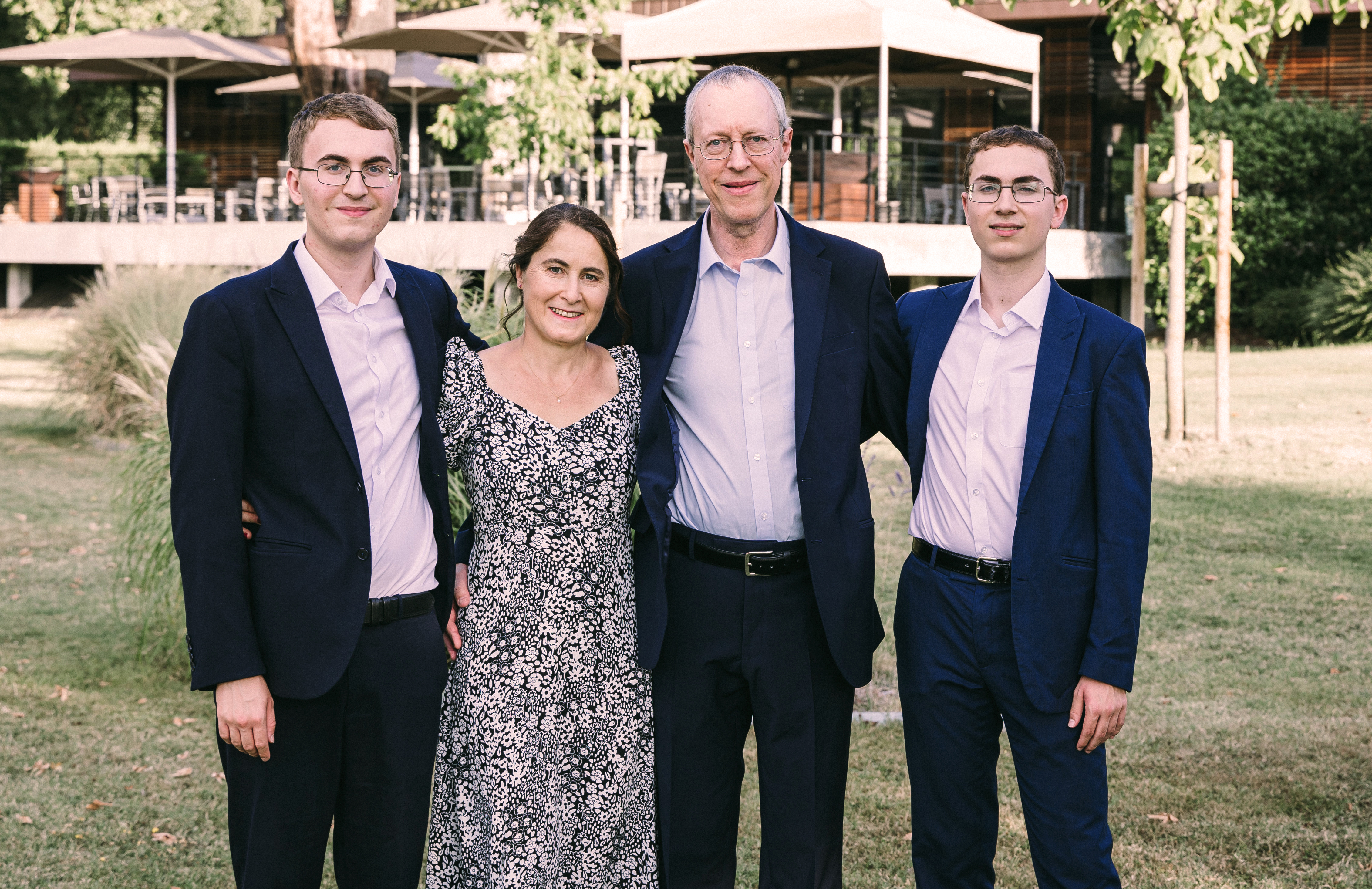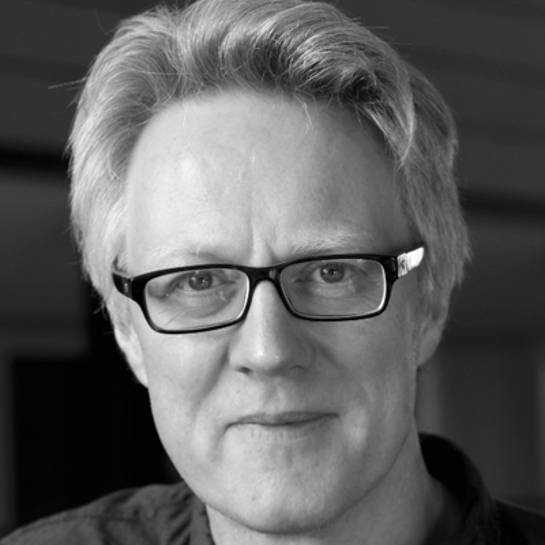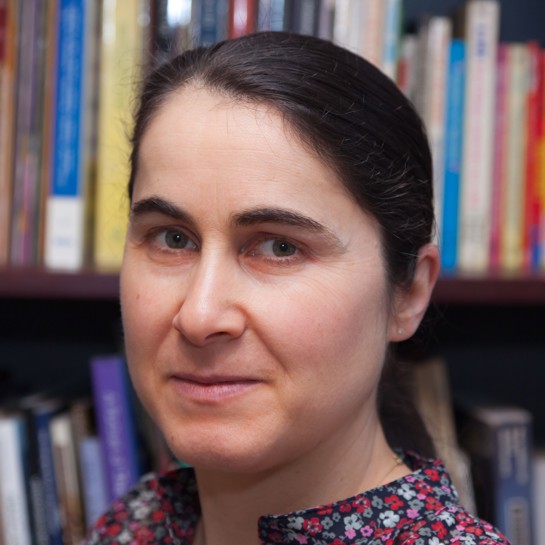Obituary: Nicholas J. Higham

Nicholas J. Higham—a leading researcher and communicator in computational and applied mathematics and a former president of SIAM—passed away on January 20, 2024, at the age of 62. Nick was born on December 25, 1961, in Eccles, Manchester, in the U.K. Because he was the first baby to be born on Christmas morning, he won a prize — an experience that would later become familiar to him throughout his impressive academic career. Shortly after Nick’s birth, a nurse unexpectedly took him away; when she returned with him an hour later, she explained that Nick had played the role of baby Jesus in the hospital’s Christmas morning service.
Nick’s father, Ken, was highly proficient in Morse code and served as a wireless operator in a tank throughout Europe, Africa, and the Middle East during World War II. His mother, Doris, worked as a secretary and later earned qualifications in English language and literature. Given his parents’ respective backgrounds, Nick attributed his mathematical abilities to his father and his writing skills to his mother.
Nick was a talented musician. Beginning at age 14 and continuing into his 40s, he played the keyboard as a resident organist in local social clubs, usually alongside a drummer and visiting artist. He enjoyed long residences at three different clubs, where audience members were typically unaware that “Nick the organist” was also an eminent maths professor. Back when he was an undergraduate student at the University of Manchester, Nick spent his organ earnings on personal computers — an unusual and expensive proposition in the early 1980s. He owned a Commodore PET microcomputer and then upgraded to a Commodore 64 (C64); as a Ph.D. student, he even wrote a piece of commercial software for the C64 that served as a very early and highly prescient version of a digital musical recorder and editor. Nick used a combination of BASIC and 6502 assembler code to convert the computer keyboard into a piano. The manual for this 1985 “Music Master” software is still available online.
After graduating with an honours degree in mathematics and a master’s degree in numerical analysis and computing, Nick remained at the University of Manchester to pursue his Ph.D. He more or less chose his own research topic because his supervisor, numerical ordinary differential equation expert George Hall, was confident in his ability to work independently. Before he finished his Ph.D., Nick was offered a permanent academic position at Manchester under the “new blood” scheme, which encouraged U.K. universities to hire promising young academics. He went on to spend the entirety of his career at Manchester, rising to the rank of Richardson Professor of Applied Mathematics (named for mathematician and meteorologist Lewis Fry Richardson) in 1998. Beginning in 2018, he simultaneously held a prestigious Royal Society Research Professorship.
Nick’s work as a numerical analyst embraced the full spectrum, from rigorous theory to practical implementation. He quickly became known as the leading expert of rounding error analysis, due in part to his 1996 bestselling 700-page SIAM monograph titled Accuracy and Stability of Numerical Algorithms (with a second edition in 2002). His research interests also included linear systems and condition estimation, least-squares problems, eigenvalue problems, matrix functions, and nonlinear matrix equations. Nick’s 2008 SIAM book, Functions of Matrices: Theory and Computation, was the first text to embrace both theoretical and algorithmic aspects of matrix functions.
In a sequence of articles over the last decade, Nick pioneered two new directions for rigorous floating-point error analysis — revealing the explanatory power of probabilistic rounding models and establishing the effectiveness of mixed-precision arithmetic in high-performance algorithms. In the weeks before his death, he completed the final draft of a 550-page book that brings together concepts and results that he found useful throughout his research career.
Yet another monumental work was Nick’s editorship of the authoritative 2015 Princeton Companion to Applied Mathematics. During a 2016 interview about this book, Nick was asked, “What is applied mathematics?” [1]. He replied with the following sentiment:
My favourite quote is from Lord Rayleigh. He said that applied maths is about using mathematics to solve real world problems ‘neither seeking nor avoiding mathematical difficulties.’ That means you’ve got some real world problem in mind and you don’t oversimplify it so that you can solve it. You’ll do whatever you have to do to come up with either a solution or an approximation. That is a nice way of giving the flavour of applied mathematics."
It is therefore fitting that Nick’s most highly cited research paper—“Computing the Nearest Correlation Matrix – A Problem From Finance,” which published in the IMA Journal of Numerical Analysis [2]—was motivated by a practical query from a member of the financial industry.
The work of numerical analysts is not only recorded in journals and textbooks; it may also be made operational and scalable through software. Nick was passionate about this means of widespread dissemination and impact. In fact, more than 50 of MATLAB’s built-in routines are credited directly to him, and his three open-source MATLAB toolboxes—the Matrix Computation Toolbox, Matrix Function Toolbox, and Nonlinear Eigenvalue Problems Toolbox—are routinely cited in the literature. Nick’s algorithms for condition estimation, the nearest correlation matrix, and numerous matrix functions and their Fréchet derivatives have been implemented in a wide range of packages and programming languages, including the Linear Algebra PACKage, Python, R, Julia, and the NAG Library. Nick consulted for MathWorks (the maker of MATLAB) for many years and coauthored the popular MATLAB Guide with his brother, Desmond Higham, in 2000 (with a second edition in 2005 and a third edition in 2017).
Nick’s momentous contributions to the field of applied mathematics have garnered universal recognition. Among other accolades, he received SIAM’s George Pólya Prize for Mathematical Exposition in 2021 as well as three awards from the London Mathematical Society: the Naylor Prize and Lectureship in Applied Mathematics in 2019, the Fröhlich Prize in 2008, and a Junior Whitehead Prize in 1999. The Institute of Mathematics and its Applications awarded him their Gold Medal in 2020 and the Leslie Fox Prize for Numerical Analysis in 1988. Nick’s roster of awards is bookended by the Alston S. Householder Award in 1987 for his impressive Ph.D. thesis on numerical linear algebra, and the Hans Schneider Prize in Linear Algebra in 2022. He was elected as a Fellow of the Royal Society in 2007 and was named an inaugural Fellow of SIAM in 2009, a Fellow of the Association for Computing Machinery in 2020, a Fellow of the Royal Academy of Engineering in 2022, and an international member of the U.S. National Academy of Engineering in 2023.

Nick was an effective and committed leader. He served on the editorial boards of leading journals in linear algebra and numerical analysis and chaired the SIAM Activity Group on Linear Algebra from 2001 to 2003 and the International Householder Committee from 1999 to 2002. He regularly organized research workshops at venues around the world, including the Schloss Dagstuhl in Germany, the Banff International Research Station in Canada, and the Mathematical Research and Conference Center in Poland.
Nick’s appointment as the first non-U.S.-based member of the SIAM Council—on which he served two terms from 1996 to 2001—reflected his worldwide reputation within the applied mathematics community. He was elected to the SIAM Board of Trustees from 2006 to 2008 and served as SIAM president in 2017 and 2018. During his presidency, he wrote 20 “From the SIAM President” columns for SIAM News that addressed a wide range of topics, from Bohemian matrices to the color yellow.
Nick also produced a long-running and hugely popular series of “What Is” blog posts about fundamental areas of mathematics, maintained a widely followed X (formerly Twitter) account, and encouraged SIAM to develop a strong social media presence. He was an ardent proponent of creativity workshops and organized multiple events for both SIAM and his own research group. These experiences inspired his 2022 SIAM book with Dennis Sherwood: How to Be Creative: A Practical Guide for the Mathematical Sciences.
Nick met his future wife, Françoise Tisseur, at a conference in Toulouse, France. They started dating in January 1996, got engaged 10 months later, and were married in France in May 1998 after Fran completed a postdoctoral position at the University of Tennessee. Nick and Fran were a perfect match, as they shared common interests within and outside the sphere of mathematics but also complemented one another in many other ways. Their sons Thomas and Freddie were born in 2003 and 2004. Nick was a wonderful father, playing an active role in their upbringing and taking a keen interest in their education. Thomas and Freddie are respectively pursuing degrees in mathematics and computer science at the University of Warwick and the University of York.
Nick’s interests—which he always pursued wholeheartedly—extended well beyond the realm of applied math. For example, he and Fran maintained a beautiful garden and a separate allotment for fruits and vegetables. In his 30s, he took up photography — an activity that paired well with his frequent travel. Nick contributed photographs to Alamy, a stock photography agency, and many of his shots have been used by its clients. Another point of enthusiasm for Nick was stationery, ranging from notebooks, pencils, pencil sharpeners, and fountain pens to erasers and blackboard chalk. His scholarship lent itself to a passion for topics such as dictionaries, indexing, punctuation, and typography, which—combined with his communication skills—resulted in his highest-selling SIAM book: 1993’s Handbook of Writing for the Mathematical Sciences (with a second edition in 1998 and a third edition in 2020).
One of the many remarkable features of Nick’s life is that he generated his own momentum. He spent his entire career at the University of Manchester, living across the road from the sixth form (pre-university) college that he attended, and built a research group from scratch in his chosen field. Residing in Eccles also allowed Nick and Fran to spend valuable time with Nick’s parents and care for them as they aged. Although it is impossible to sum up Nick’s life and contributions in a single sentence, the words that stay with us when we think of Nick are creative, scholarly, humorous, down-to-earth, reliable, determined, and generous. He will be greatly missed by friends, family, colleagues, the SIAM community, and everyone who knew him.
For tributes and reflections from Nick’s colleagues and members of SIAM staff, please see “Remembering Nick Higham: 1961-2024.”
References
[1] Coles, A., & Roell, S. (2016, April 27). The best books on applied mathematics recommended by Nick Higham. Five Books. Retrieved from https://fivebooks.com/best-books/nicholas-higham-applied-mathematics.
[2] Higham, N.J. (2002). Computing the nearest correlation matrix—a problem from finance. IMA J. Numer. Anal., 22(3), 329-343.
About the Authors
Desmond J. Higham
Professor, University of Edinburgh
Desmond J. Higham is a professor of numerical analysis at the University of Edinburgh. He is a SIAM Fellow.

Françoise Tisseur
Professor, University of Manchester
Françoise Tisseur is a professor of numerical analysis at the University of Manchester and the vice president of SIAM-UKIE.

Stay Up-to-Date with Email Alerts
Sign up for our monthly newsletter and emails about other topics of your choosing.



